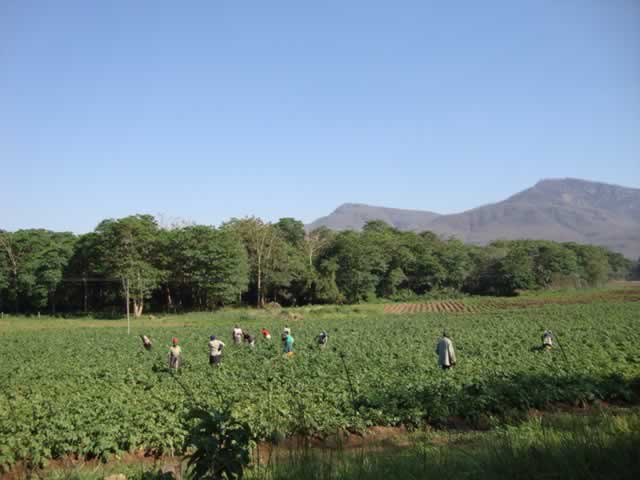
The Sunday Mail

Farmers’ organisations and the Meteorological Services Department believe that the coming of the rains signal the commencement of the 2014/15 farming season.
Despite predictions that the season might be affected by the El Nino effect, farmers interviewed by The Sunday Mail Extra are hopeful that there will be enough rains for a bumper harvest.
El Nino raises chances of receiving below average rainfall. Weather forecasts by several reputable national and international organisations indicate that El Nino is brewing in the Pacific Ocean.
According to the forecasts by the Climate Prediction Centre and the International Research Institute for Climate and Society, there is an elevated chance of an El Nino event developing and this effect was predicted to continue up until early 2015.
Weather experts point out that southern Zimbabwe, Zambia and Mozambique are likely to have a 50 percent chance of below average October-December rains.
The country has of late been receiving high day-time temperatures and rainfall has fallen in most of the country’s provinces.
But contrary to the forecasts that are predicting the El Nino effect, the Meteorological Services Department has, however, predicted normal to above normal rainfall during the 2014/15 rainfall season.
A recent visit to farming areas dotted around Harare by this publication revealed that most farmers were ready to plant whilst others were making desperate last-minute preparations.
Some of the farmers had dry planted but the majority of the farmers said they will only plant their crops once they received rainfall in excess of 25 millimetres.
One of the farmers who has adequately prepared for the season is Mr Herbert Shumbamhini of Devonia Farm in Goromonzi.
He has already dry planted commercial maize on 45 hectares. The farmer intends to have 120 total hectarage under maize. He also intends to put 10 hectares under potatoes and a further 60 under sorghum.
The prominent farmer urged farmers to make use of the early rains.
“We have already dry planted 45 hectares. Dry planting can be risky but farming has always been a risky business.
Rainfall patterns are no longer predictable and as such farmers must always make maximum use of the first rains,” Mr Shumbamhini said.“There is need for proper planning.
A serious farmer should by now have fully prepared the land and should have acquired the fertilizer, seed, herbicides and inputs.”
Last season, Mr Shumbamhini had 80 hectares under seed maize.
The farmer has, however, switched to commercial maize.
“In my opinion, the best time to plant is before the end of this month. Timing is very important,” said Mr Shumbamhini, who also encouraged farmers to grow cash crops. Last year, the farmer realised an average of 13 tonnes per hectare after planting his maize early.
Most farmers in the area who planted later only managed to produce six tonnes per hectare on average.
Mr Shumbamhini strongly believes in proper planning for every farming detail.
“Farming should not be like an accident. Instead, farmers should plan and acquire inputs well before the commencement of the season.
Farming is profitable business but only if the proper procedures are followed,” he said.
Late preparations, inadequate input availability, lack of financial resources and other constraints lead to poor harvests. “We want Zim-Asset to succeed. As a farmer, I am doing my part and that part is to ensure food security,” he said.
At the time of our visit, Mr Johannes Magombo, an A1 farmer at Chezani Farm in Zvimba district, was busy making last-minute land preparations.
“I am almost there. Due to climatic changes, weather conditions have become unpredictable. I am going to plant early but I will also make sure that I also space the planting period,” he said.
Not to be left out, urban farmers are also busy working on their small pieces of land. Some of them have also dry planted.
According to a 2009 Agritex report, 10 percent of land in Harare was used for urban farming.
“I have been tilling this piece of land since Independence. In terms of land preparation, I am almost done. Once the rains fall, I will plant,” said Mrs Mary Dauti of Highfield.
However, the urban farmers have often clashed with environmentalists over their farming methods.
In most cases, they plant their crops in wetlands and near stream banks. They also use polluting chemicals that are harmful to both humans and the environment.
Mr Wonder Chabikwa, the president of the Zimbabwe Commercial Farmers’ Union, urged farmers to plant their crops once the moisture content has risen to appropriate levels.
“Farming is not about the size of land. It is about timing and resources.
“Some farmers end up preparing land that they are not capable of maintaining,” he said.
He encouraged farmers to seek advice on the correct time and type of crops to plant from Agritex.




